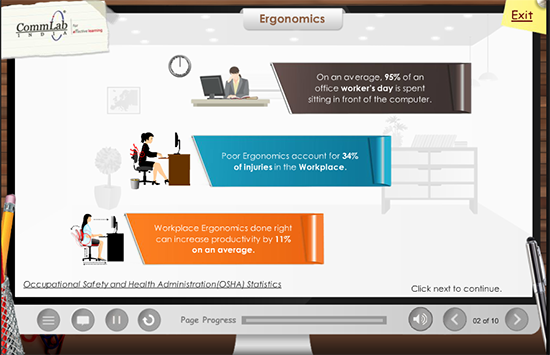4 Ways to Spice Up Your E-Learning Course

As an instructional designer, it is a challenge to keep the learner constantly engaged in an eLearning course. Designers need to come up with unique ways to grab a learner’s attention. The human mind has an attention span of only 45 minutes; our brains are easily susceptible to distractions. One way to ensure learner attention is by adding some spice in your eLearning course.
In this post, we will take a look at 4 ways to spice up your eLearning course.
1. An interesting start
Starting your course with the old school traditional way with learning objectives will make it uninteresting and monotonous to your learner. There are many ways to make your course interesting right from the beginning. For instance, you can start your course with statistics about the subject being taught. This approach will help in two ways:
- Your course starts with a “big bang” and engrosses your learner.
- Your learners get a gist of the subject being taught in the course.
Let’s take a look at how statistics were used as the introduction for a course on Ergonomics that was developed using Articulate Storyline.

2. Stories that have conflicts
Stories are great tools to impart knowledge, and you can explain a complicated process or procedure with the help of a story. For instance, if you create a story on a sales process, you can add the element of conflict between the sales representative and his manager. You can use this conflict to explain the sales process. Making use of conflict will help you in two ways:
- Creating conflicts in stories will increase suspense and keep your learner hooked for a long time.
- The entire process is explained and learnt effortlessly.
Let’s take a look at how conflict was used to explain the sales process in a course, which was developed using Lectora:

3. Videos to break monotony
Videos add great value to learning. They can be a two minute snippet on a complicated process or procedure and provide a great level of interaction. Videos generate a sense of personalization and help the learner connect with your course, instantly. This connection makes him continue with the course and finish it. With videos, you have the added advantage of hooking your learner with ample audio and visual elements. Take a look at the examples below where topics such as instructional design basics and food safety documentation are shown in a video.

4. Striking Design
We all love to see good colors and designs on our screens, be it our desktop or mobile wallpapers. The same applies to eLearning courses. Good, striking visuals make a far reaching impact on the learner. Designing doesn’t mean just adding an image to the text; it can be anything from a proper screen layout to an infographic that breaks your topic into understandable points.
A striking design :
- Provides consistency throughout the course
- Helps in understanding visual elements better
Let’s take a look at how striking designs were used to explain Pharmacokinetics, using Adobe Captivate:

I hope this post has helped you spice up your eLearning course. Do share your views.



![AI-Enhanced Gamification for Hyper-Engaging eLearning [Infographic]](https://blog.commlabindia.com/hubfs/blogs/gamification-ai-enhanced-benefits-info.jpg)

